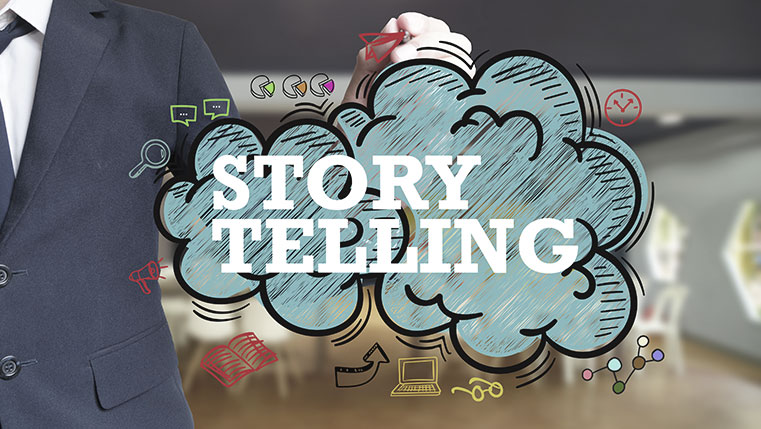Storytelling is one of the most effective ways to convey content in eLearning by getting the learners to care more deeply about the information.
This instructional strategy makes the content more relatable, helping you establish a genuine connection, while increasing engagement and comprehension.
Why Use Storytelling in eLearning?

The use of storytelling helps instructional designers create motivating connections with disconnected learners in online courses.
Storytelling is the one of the oldest and most elemental forms of knowing. The use of story for knowing has shifted over the last three centuries, during what is known as the modern period, due to a push toward scientific inquiry.
In eLearning, storytelling is enjoying a revival because it relates well to constructivist ideas about teaching and learning.
You may recognize a great story when you hear one, but perhaps are not sure as to what makes it great or even what makes it a story.
Further, you may not know where to begin when it comes to creating a story or teaching your learners how to create stories.
In order for a story to become the vehicle for instructing and learning, instructional designers must have a solid understanding of the building blocks of the story.
Think about your favorite movie, television show, or novel. Did the main character in that story follow the hero's journey or a similar path?
Compare the hero's journey to the diagrams of Freytag's Pyramid and the three-act structure shown here. Do you see how Freytag's Pyramid, the three-act structure, and Campbell's monomyth all follow a similar pattern?


What does this suggest about narrative structure and about our inherent affinity towards story? We are predisposed to respond to story, which is part of the reason story makes an excellent vessel for teaching and learning.
Storytelling as it Relates to eLearning
Instructional designers are beginning to understand story as a way of knowing things: a “narrative epistemology.” Due to how stories are constructed, they can become the basis for teaching and learning.
Story has, is, and will continue to serve multiple functions in the learning process. Stories engage learners and provide a system for organizing knowledge into meaningful chunks to aid in recall.
Given that learners of all ages are attracted to good stories, and they provide such good teachable moments, integrating them into multiple areas of training certainly makes sense in certain circumstances.
The whole concept of integrating storytelling in your eLearning course can be accessed in the the eLearning and Instructional Design for Beginners Community.
The community provides you with a step-by-step guide on how to integrate storytelling in your online course. Start your career in Instructional Design (ID) and eLearning. Build an online course from scratch and finish with mastery.
Whatever you need help with, the community is there to help you master your skills. Interested in joining the community? Click here to get started.
JOIN THE
eLearning and Instructional Design for Beginners Community
- In-depth courses & training
Access my rapidly growing library, attend monthly live training & accountability support groups
- Exclusive tools & members-only discounts
Tools, templates, downloads, checklists and more - plus receive special perks & discounts
- Supportive community & network
Feedback and support from fellow instructional designers, career-driven business owners, and experts who will keep you on track
Get Your Software Toolkit for Instructional Designers
Tools & processes that will help you plan, build, and grow your instructional design career and freelance business.




